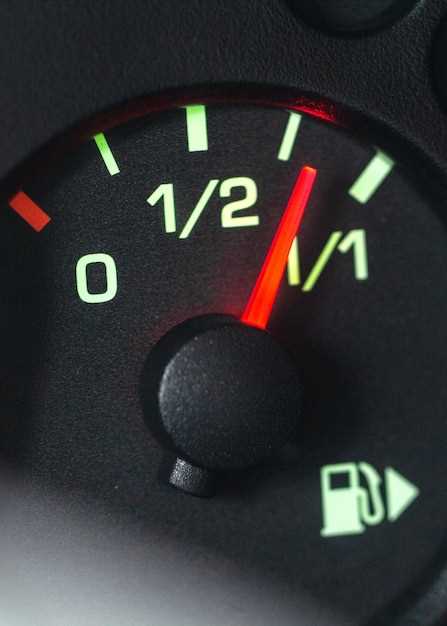
The oxygen sensor plays a crucial role in your vehicle’s performance and emissions control system. Its primary function is to monitor the level of oxygen in the exhaust gases, allowing the engine control unit (ECU) to make necessary adjustments for optimal fuel efficiency. However, like any component, the sensor can experience failure over time. Recognizing the signs of a failing oxygen sensor is essential to maintain your vehicle’s health and to avoid costly repairs.
When an oxygen sensor begins to fail, it can lead to a series of observable symptoms that may indicate a need for immediate attention. Common signs of sensor failure include a decrease in fuel efficiency, an increase in harmful emissions, and engine performance issues. If you notice changes in how your vehicle behaves, it is vital to investigate whether the oxygen sensor is the culprit.
Ignoring the signs of a failing oxygen sensor can lead not only to reduced fuel efficiency but also to potential damage to the engine and exhaust system. This article will explore the key signs that your oxygen sensor is on the verge of failure and highlight the importance of prompt action to ensure your vehicle remains in peak condition.
Decreased Fuel Efficiency Indications
One of the most noticeable signs of oxygen sensor failure is a significant drop in fuel efficiency. When the sensor malfunctions, it cannot accurately measure the amount of oxygen in the exhaust gases. This incorrect data leads to an improper fuel-to-air mixture, causing the engine to operate less efficiently.
Drivers may notice that they are refueling more frequently than usual, as the engine burns more fuel to compensate for the incorrect readings. This decline in fuel efficiency can manifest as a decrease in miles per gallon (MPG), indicating that the vehicle is consuming more gasoline to achieve the same performance levels.
Additionally, a failing oxygen sensor may trigger the engine control unit (ECU) to enrich the fuel mixture excessively. This condition not only decreases fuel efficiency but can also result in increased emissions, potentially leading to the activation of the Check Engine light.
Monitoring fuel consumption is crucial. If there is a sudden change in how much fuel your vehicle uses, it is essential to consider the state of the oxygen sensor as a potential cause. Addressing this issue promptly can prevent further damage to the engine and ensure optimal performance.
Check Engine Light: What It Means for Your Oxygen Sensor

The Check Engine Light (CEL) is a vital indicator that alerts drivers to potential issues within their vehicle, including problems related to the oxygen sensor. When this light activates, it often points to anomalies in the air-fuel mixture, system inefficiencies, or malfunctioning sensors. Specifically, a faulty oxygen sensor can send incorrect data to the Engine Control Unit (ECU), causing various performance issues.
One of the primary signs of a failing oxygen sensor is a fluctuating or consistently illuminated Check Engine Light. If the sensor is not providing accurate readings, the ECU might struggle to maintain optimal fuel efficiency and emissions levels. Over time, this can lead to increased fuel consumption and a noticeable drop in engine performance.
Additionally, the CEL is often accompanied by other warning signs. If you notice poor acceleration, rough idling, or even a failed emissions test, the oxygen sensor’s performance should be assessed. Ignoring the illuminated Check Engine Light may result in more severe engine issues, as improper air-fuel mixtures could harm other components of the vehicle.
When the Check Engine Light turns on, it’s crucial to use an OBD-II scanner for diagnosing the specific fault codes associated with the oxygen sensor. This tool can provide insight into whether the sensor itself is the issue or if other related systems are at fault. Prompt attention to the Check Engine Light can help preserve vehicle efficiency and longevity, making it essential for drivers to prioritize diagnosing and addressing any potential oxygen sensor failures.
Unusual Engine Performance Symptoms to Watch For

Regular monitoring of your vehicle’s engine performance is crucial to ensuring its longevity and efficiency. One common cause of engine issues is the failure of the oxygen sensor. Here are some signs that can indicate a malfunctioning sensor, which may lead to engine performance problems.
First, pay attention to fluctuations in engine idle speed. If the engine seems to struggle or fluctuates unexpectedly while idling, this could signify an issue with the oxygen sensor. A failing sensor may send incorrect data, causing the engine control unit (ECU) to miscalculate the air-fuel mixture.
Another symptom to observe is a decrease in fuel efficiency. If you’re noticing that your vehicle consumes more gas than usual, it may be due to an oxygen sensor not providing accurate readings. This can cause the engine to run excessively rich or lean, leading to wasted fuel and increased emissions.
Moreover, check for unusual exhaust emissions. If you see excessive smoke or an unusual color from the exhaust, it might indicate an oxygen sensor problem. A compromised sensor can lead to incomplete combustion, causing visible signs of distress in the emissions.
Also, keep an eye on the vehicle’s acceleration. If you experience a noticeable lack of power or sluggish response upon accelerating, this could be a sign of improper air-fuel mixture management caused by a failing oxygen sensor. The engine may not be able to perform optimally under these conditions.
Finally, be aware of potential engine warning lights on your dashboard. The check engine light may illuminate when the oxygen sensor is malfunctioning, resulting in the ECU detecting an issue. Prompt attention to this warning can prevent further damage and costly repairs.
In conclusion, vigilance regarding these signs of potential failure can help ensure your vehicle runs smoothly and efficiently. If you notice any of these symptoms, consider having your oxygen sensor checked and replaced if necessary.




